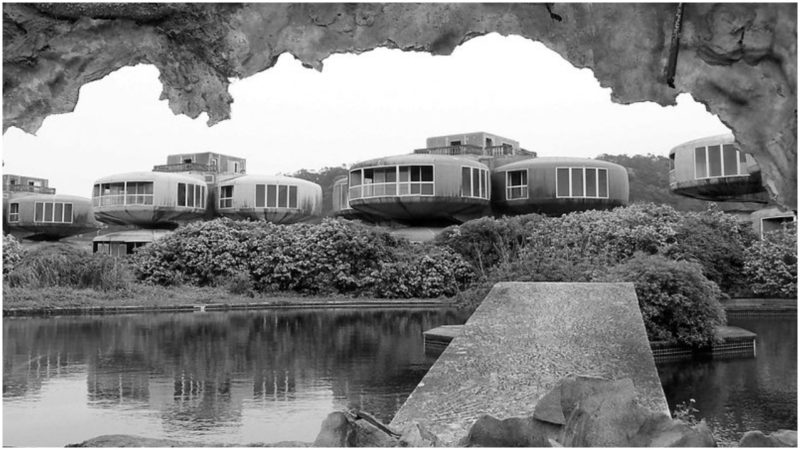Designed with intentions to become a holiday resort for US military officers stationed in East Asia, the Sanzhi Pod City never fully materialized. Incomplete and abandoned from 1980, now it is totally demolished and survives only in photos.
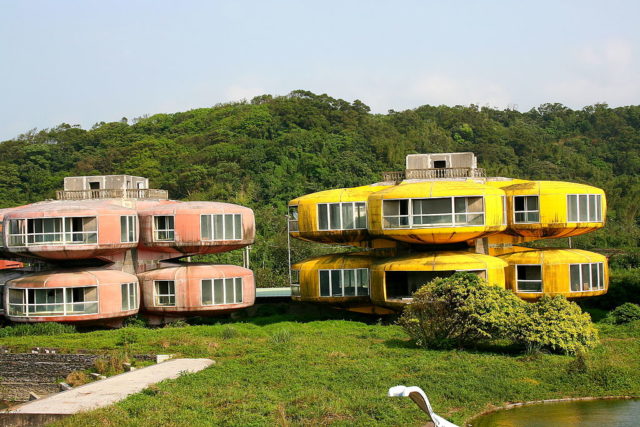
Commonly known as the “ruins of the future”, pictures of the Sanzhi Pod Houses (or UFO houses) definitely show a place that was clearly ahead of its time, an ambitious dream that was shattered by unpredictable circumstances. Even the stories about this magnificent pod resort’s abandonment have become some sort of legend.
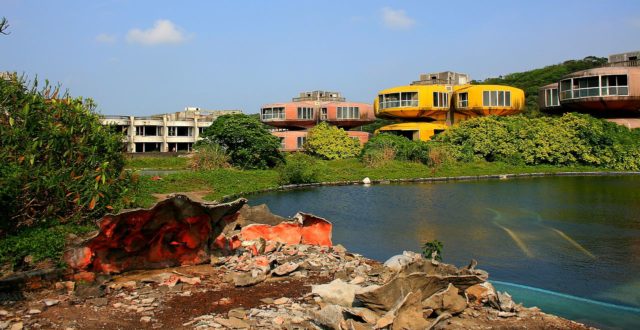
Many still believe that the place itself was cursed, and the whole project was doomed from the get go. Reportedly, the resort was built on top of a graveyard of 17th-century Dutch soldiers and rumors still circulate that over 20,000 skeletal remains were actually found on the site.
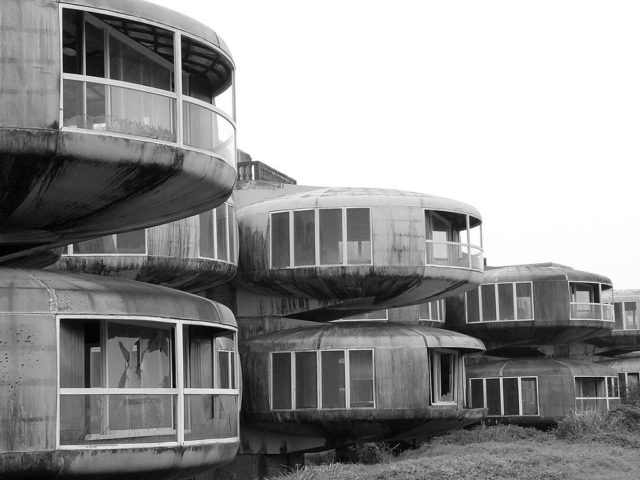
Construction of the houses started in 1978, in New Taipei City, Taiwan. The project designed by a Chinese company called the Hung Kuo Group, which was inspired by Matti Suuronen’s Futuro housing concept – ready made houses with a distinctive flying saucer shape. And, if finished, the Sanzhi pod resort, with its own water park, would have been spectacular.
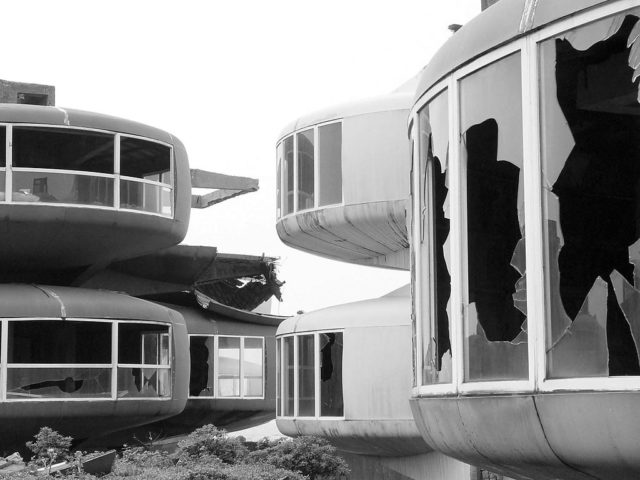
But, very quickly, problems began to arise. When a ceremonial dragon statue was destroyed to make way for the construction vehicles, it all went downhill. There are reports of mysterious accidents, many of which were fatal, several workers committing suicide without any indication and evil spirits on the site.
Everything just added up to the paranormal reputation that the place was earning. And even to this day, plenty of locals still consider this the reason that drove the builders away.
After only two years, the entire project was shut down and the Sanzhi space city became just another ghost town. The Hung Kuo Group filed for bankruptcy, which is why most people think Sanzhi was never finished: poor funding and lack of investment.
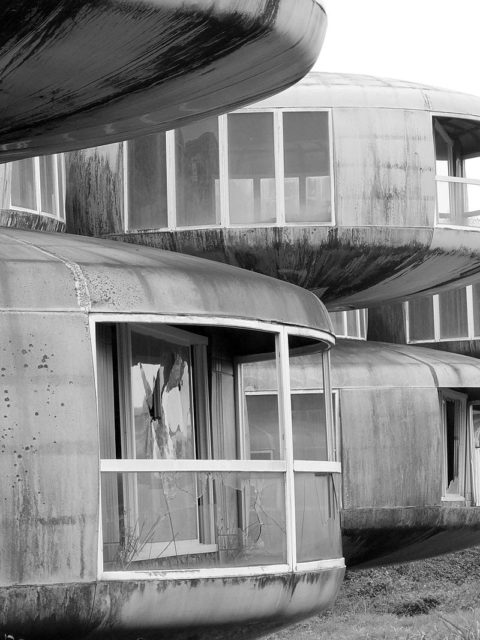
The site was closed to the public, but that didn’t stop vandals and curious tourists breaking into the complex. It became especially popular among sci-fi enthusiasts, photographers, and urban explorers who were amazed by the resort’s eccentric architecture and other-worldly appearance. Needless to say, the place was a true underground cult favorite.
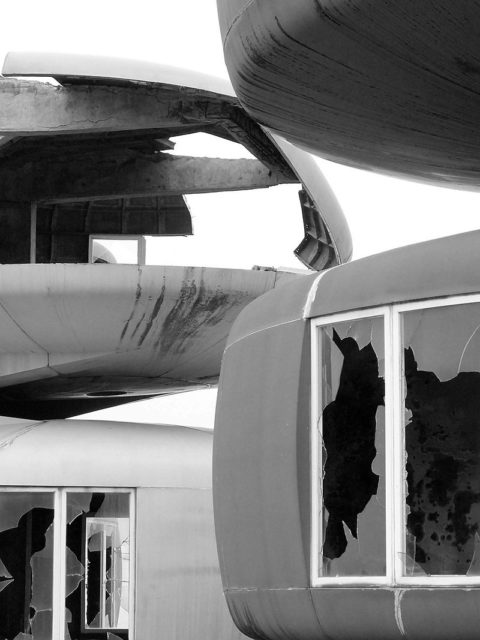
In 1989, there was some hope for the Sanzhi complex, when the president of a local beer house showed interest in completing the project. Architects and designers were hired, backed up with a sum of $24 million. But when they realized that the pods were made of reinforced concrete covered by fiber-reinforced plastic, and the risk of earthquake damage was too great, they backed out of the project.
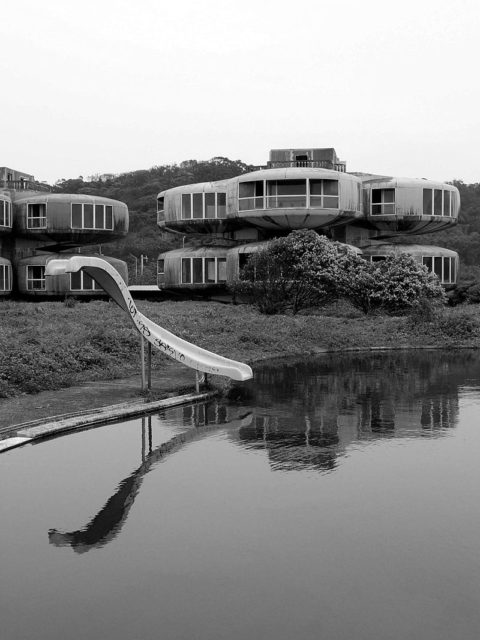
After that, the Sanzhi Pod City was left alone. It remained abandoned for nearly 20 years. During this time, pictures that were taken from the resort appeared in numerous great articles and it was used as a filming location by MTV.
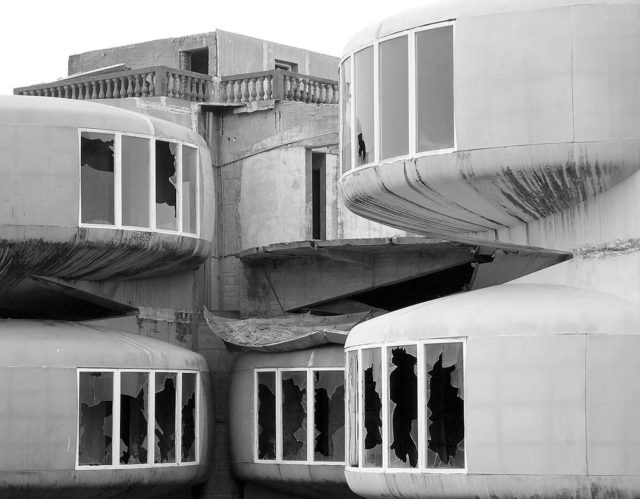
The pod houses were scheduled for demolition in 2008, and despite online petitions for at least one building be preserved as a museum, demolition started on 29 December 2008. By 2010, all that remained of the Pod City was gone. Another company leased the land with the hopes of turning in into a tourist resort, which is somewhat ironic because that was the intention in the first place.
